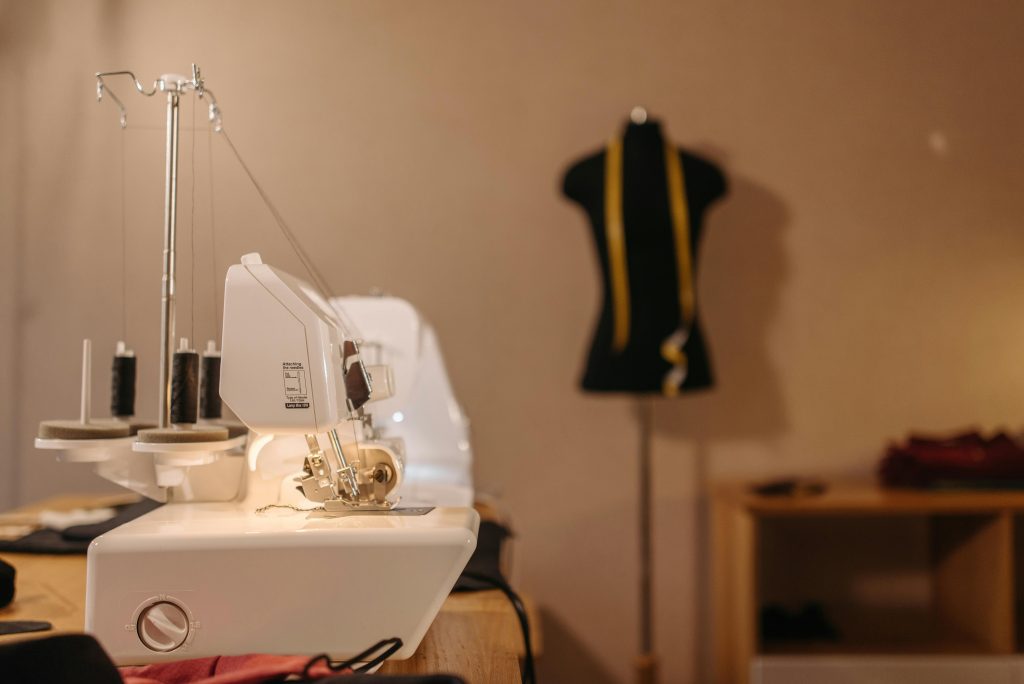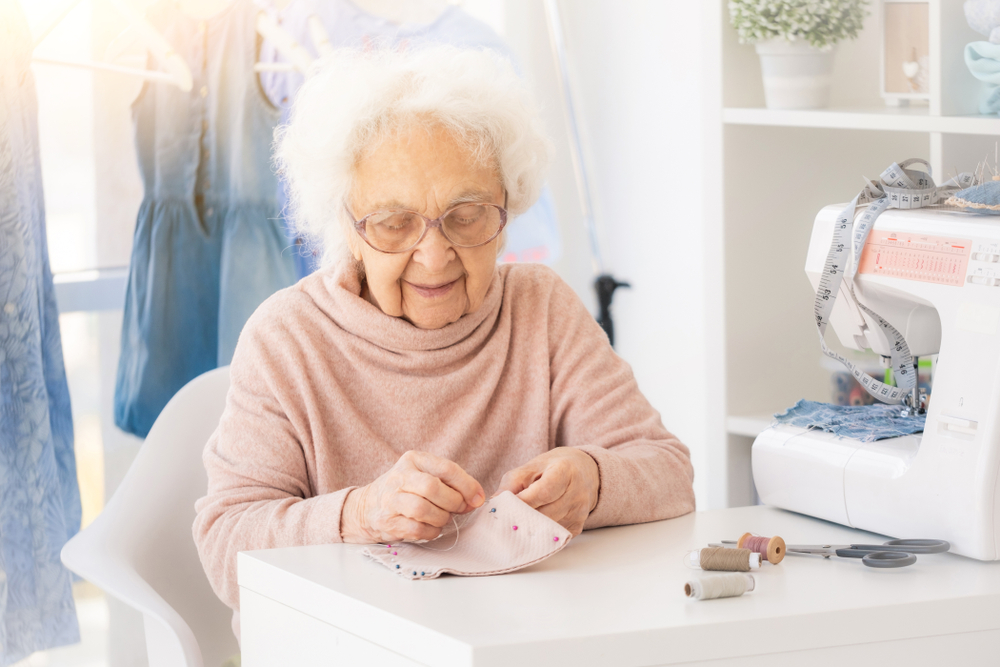Your cart is currently empty!
Nearing 100, Woman Stitches Hope Into Dresses for Girls in Poverty

In a world that often felt too fast, too harsh, and too disconnected, stories of quiet, steadfast kindness stood out like beacons. One such story came from Bettendorf, Iowa, where a 99-year-old woman named Lillian Weber had spent her days creating something extraordinary out of the ordinary. With nothing more than a sewing machine, fabric, and a heart that never seemed to slow down, she had dedicated her final years to making dresses for children living in poverty across the globe. Her ambition was neither small nor symbolic. She set out to sew 1,000 dresses before reaching her 100th birthday. For her, it hadn’t just been charity; it had been a life mission stitched one hem at a time.
Lillian’s story reminded the world that impact didn’t always come from wealth, influence, or youth. Instead, it could emerge from the consistent application of care and effort. Each dress she sewed had carried not only fabric and thread but also dignity, beauty, and a silent message to the little girl who received it: you matter. Those garments, simple yet infused with personal touches, had traveled thousands of miles to reach children in Africa who might otherwise never have owned a new piece of clothing. In doing so, Lillian’s hands had bridged continents, generations, and experiences, proving that compassion knew no age limit.
The Woman Behind the Sewing Machine
Lillian Weber had lived in a modest farmhouse in Bettendorf, Iowa, a setting that seemed almost frozen in time. While many people her age might have spent their days resting or reminiscing about the past, Lillian had chosen a path that defied expectation. Beginning in 2011, she had made more than 840 dresses, averaging one each day without fail. “I have to be busy,” she once told a local news outlet, her words simple yet profound. That drive to stay active, to do something meaningful with the hours she had left, became a legacy of kindness stretching far beyond her immediate community.
Her process had been as deliberate as it was disciplined. Each morning, she would select fabric with patterns that caught her eye. She would then begin to cut and stitch the base of the dress, ensuring that the fundamentals were neat and sturdy. By midday, she would take a short break before returning to add her signature flourishes ribbons, appliqués, decorative stitching, or anything else that made each garment unmistakably her own.
By the afternoon, each dress had transformed from a simple piece of cloth into a one-of-a-kind creation. For Lillian, it had never been enough to simply produce clothing. As her daughter, Linda Purcell, once explained, her mother had always insisted on adding something extra: “It wasn’t good enough that she made the dresses; she had to put something on the front to make it look special, to give it her mark.”
Her sewing machine had once hummed with purpose, but beneath that steady sound had existed something far greater: the act of reclaiming time. At 99, she could easily have accepted society’s quiet suggestion that she should rest, but instead, she had devoted her energy to proving that every day still mattered. Sewing had been her form of meditation, a daily rhythm that grounded her and connected her to children she would never meet. She had often said she could make two dresses a day, but she had chosen not to, believing that one perfect, personalized dress carried far more meaning than two rushed ones.
Dresses With a Purpose

The garments Lillian had sewn were far more than fabric stitched together; they represented dignity, worth, and a sense of identity for the children who received them. Her work had been connected to Little Dresses for Africa, a nonprofit founded in 2008 by Rachel O’Neill. Based in Michigan, the organization has distributed over 2.5 million dresses to girls in 47 countries across Africa, as well as to vulnerable communities in other parts of the world. What made the initiative powerful was not only the sheer number of garments distributed but also the philosophy behind them. “We’re planting in the hearts of little girls that they are worthy,” O’Neill once explained. In regions where resources were scarce and daily survival was the priority, a new dress could offer a profound psychological lift.
For a child who had never owned anything new, slipping into a dress made just for her could be transformative. It might have been the first time she felt truly seen, valued, and cared for by someone beyond her immediate family. Lillian’s dresses, adorned with her personal touches, became more than clothing they were messages of hope. Each stitch seemed to whisper: You deserve joy. You deserve beauty. You deserve dignity. That impact could not be measured in fabric or thread; it lived in the way a child stood taller, smiled brighter, or walked with newfound confidence.
Charities like Little Dresses for Africa operated on the belief that dignity was as essential to survival as food or shelter. When girls were given clothing that made them feel valued, it influenced how they saw themselves and, in turn, how they moved through the world. In many African communities, those dresses were worn to school, church, and community events, serving as a visible reminder that even amid hardship, there was room for pride and self-worth. Lillian’s daily routine might have looked simple, but the ripple effect of her dresses was profound.
A Legacy of Love and Detail

What had set Lillian’s work apart wasn’t just the number of dresses she had made, but the way she had made them. Her insistence on adding unique touches to each garment revealed her deep understanding of individuality. To her, every girl who received a dress was deserving of feeling special. She had refused to treat her project as a production line, even though she could have doubled her output. Instead, she had poured time into embroidery, decorative stitching, and creative flourishes that turned each dress into a unique piece of art.
This attention to detail reflected something deeper about Lillian’s philosophy. She hadn’t seen the children as faceless recipients of charity, but as individuals with their own stories, dreams, and struggles. By refusing to settle for “good enough,” she had ensured that each dress carried her personal care. It had been, in many ways, a philosophy of radical kindness, the belief that every child deserved not just sustenance but something beautiful.
Her daughter Linda had often observed her mother’s perfectionism and worried. “She thought they weren’t good enough,” Linda once said. But what Lillian had seen as imperfection, the children had seen as unmatched generosity. In her quiet determination to create, she had unintentionally built a narrative about the value of persistence, humility, and love. Every added ribbon or stitch had stood as a testament to her belief that the world could be improved through small but intentional acts.
The story of her dresses was also a story of memory and continuity. Lillian had learned sewing as a practical skill, one that helped her family through difficult times. Decades later, she had transformed that skill into a vehicle for global kindness. What had once been a necessity became a gift, and through it, she had stitched her values into the fabric of communities she would never see.
From Iowa to Africa

The journey of Lillian’s dresses became its own quiet narrative of connection. From her farmhouse in Bettendorf, the garments had traveled to a local senior apartment complex in Davenport, Iowa, where they were gathered alongside dresses made by other volunteers. From there, they were shipped overseas by Little Dresses for Africa, reaching countries such as Uganda, Malawi, and beyond. Photographs from these regions showed young girls smiling broadly, proudly wearing dresses with patterns and designs that had been stitched by Lillian’s hands.
This was where the story took on an almost poetic dimension, a 99-year-old woman in America creating something for a girl she would never meet, and yet the girl could feel her presence in every thread. That bond, though invisible, was undeniable. It proved that acts of kindness could transcend geography, culture, and language. In an age dominated by technology and instant communication, Lillian’s story stood as a reminder that simple human gestures, like the making of a dress, still carried immense power.
Rachel O’Neill, the founder of Little Dresses for Africa, once said she planned to personally deliver some of Lillian’s dresses during her visits to Malawi. To her, the story of a nearly 100-year-old woman dedicating her final years to sewing was too meaningful to be overlooked. These dresses, she believed, deserved to be carried by hand so their significance could be fully honored. The children who received them would not only gain a piece of clothing but also the knowledge that someone far away, with no obligation, had chosen to invest time, love, and care into their happiness.
Why Her Story Resonates

The reason Lillian’s story resonated so widely was that it spoke to something universal: the desire to leave a mark. Many people wonder whether their lives will matter in the end, whether the sum of their actions will amount to something worth remembering. Lillian answered that question with her sewing machine. At an age when society often assumes usefulness has expired, she proved that purpose can be found at any stage of life. “When I get to that thousand, if I’m able to, I won’t quit,” she once said. “I’ll go at it again. It’s just what I like to do.”
Lillian Weber died on the eve of her 101st birthday. She was surrounded by her three daughters at her farmhouse when she passed at 6:30 p.m. on Thursday, May 5. Even in her final days, she embodied the same quiet strength and dedication that had guided her for nearly a century. Her passing marked not just the end of a remarkable life, but the continuation of a legacy that still ripples outward in every stitch she left behind.
Her determination had earned her recognition, including a nomination for WQAD-TV’s “Pay It Forward” award. But more than any award, her story inspired reflection on what it means to live fully. She challenged assumptions about aging, showing that productivity and compassion did not need to fade with time. In fact, her example suggested the opposite, that the later years of life could be among the most impactful if devoted to service.
There was also a broader cultural lesson in her life. Lillian’s project had begun after she and a group of elderly women watched a documentary about Little Dresses for Africa. They saw a need, and instead of dismissing it as someone else’s responsibility, they chose to act. That willingness to respond to believe that small, deliberate contributions could matter lay at the heart of social change. While governments and institutions debated policies and aid budgets, individuals like Lillian quietly transformed lives one dress at a time.
More Than Just Dresses
Ultimately, Lillian Weber’s story was about far more than sewing. It was about resilience, creativity, and the refusal to be sidelined by age. At 99, she had demonstrated that the human spirit thrives when it is engaged in meaningful work. Her thousandth dress, when it finally came to be, stood not just as the completion of a goal but as a symbol of what one person could achieve through consistency and heart.
Her actions reminded the world of something often forgotten in the rush of modern life: small, sustained efforts can ripple outward into extraordinary impact. The dresses might have seemed like modest gifts, but to the children who wore them, they were affirmations of worth. To the world, they became proof that compassion is timeless.
Society often searches for heroes in the grand gestures of history leaders, inventors, revolutionaries. Yet sometimes the most enduring legacies are born of quiet persistence. Lillian’s sewing machine once hummed softly in the background of her farmhouse, but its echoes reached across oceans. Her life stood as a testament to the truth that no matter where we are in our journey, we still have the power to shape the world around us.
Her message remains stitched into every seam she left behind: whether we are 9 or 99, there is always something we can do to add beauty, dignity, and kindness to the world.
